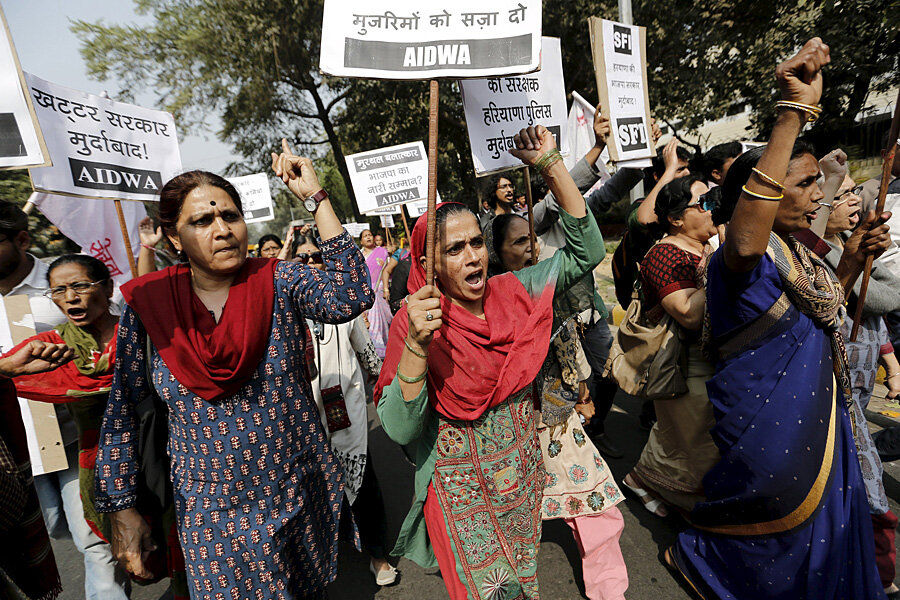Will a mobile phone panic button help stop sexual assaults in India?
Loading...
As part of an effort to fight sexual assault against women in India, all mobile phones will be required to have panic buttons starting January 2017.
The new rules released this week will apply to both local and internationally manufactured phones. "Feature phones" (a term used for phones that are not smartphones) will have the panic buttons configured to the numbers 5 and 9, so that when the button is held down for a certain period of time, a phone call will be initiated to at least 10 people including police, relatives, and close friends. Smartphones will be required to have an on-screen emergency button, or introduce a feature that will initiate an emergency phone call when the on-off button is pressed three times. In addition, phone manufacturers will be required to add a global positioning system (GPS) starting in January 2018.
Currently, India doesn’t have a centralized 911-type service for emergency calls, but a nationwide emergency response number may be introduced soon.
Some one billion people have access to mobile phones in India and the market is still growing, making India one of the fastest markets for smartphones. The country’s department of telecommunications says that panic buttons may be a better solution than apps. In 2011 New Delhi, which is dubbed India’s “capital of rape” introduced a phone app, "Fight Back" that was intended to fight assault by sending alert messages to close friends, and police. But the city continues to experience high rates of rape, with 1,813 incidences of rape in 2014, up from 1,441 in 2013, The Hindu reports, citing government data.
Campaigns against sexual assaults have taken center stage in India since the fatal gang rape of a 23-year-old student on a bus in Delhi in 2012. But despite increased campaigns, sexual assault incidents have increased since the 2012 incident that put India in the international spotlight. In 2014, for example, there were 337,922 incidences of violence – including, rape, molestation, abduction, and cruelty by husbands – perpetrated against women, up 9 percent from the figure in 2013, according to the National Crime Records Bureau, Reuters reported. And in the same year 37,000 rape cases were reported, up from 33, 707 in 2013. Experts say that a high number of assaults still go unreported, though some statistics suggest that a woman is raped in the country once every 15 minutes.
India’s Minister of Women and Child Development Maneka Gandhi, who has been championing the panic buttons, calls the new rules a “game changer.”
“When I came to the Ministry there were proposals that women should wear necklace with an inbuilt device pressing which could trigger an alarm,” Gandhi told the Hindu.
“So we thought that it is best to have the panic button on the phone. Even in rural areas women have phones now.”
“Technology is solely meant to make human life better and what better than using it for the security of women?” said Ravi Shankar Prasad, minister of communications and information technology.
But there are still concerns that the measure isn’t enough. Some women in rural areas don’t have access to mobile phones, while some areas restrict girls from owning mobile phones saying they are a distraction to academics, Reuters reported. Others who are concerned contend that requiring GPS on phones will likely increase the cost of the phones and make them unaffordable to many women.
“So while the government might force mobile manufacturers to take customer safety seriously, a panic button by itself will hardly be a panacea,” writes Shruti Dhapola, for the Indian Express. “A unified helpline, one that actually results in quick action and response from the authorities concerned will also be required. Otherwise one can keep pressing that panic button all day long.”








